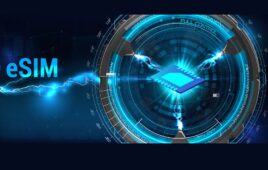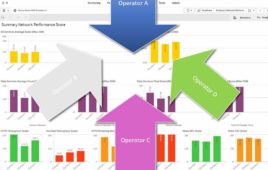Spectrum for wireless communications is a very valuable, but finite, natural resource. In most cases, spectrum has been allocated to specific applications, companies and even technologies, on what is essentially a perpetual basis. The current static allocation regime has led to inefficient utilization – both within a spectrum holder’s network as well as between network operators. This has created a perception (widely accepted as fact) of spectrum scarcity, yet industry studies show that 80 percent to 90 percent of the spectrum allocated for commercial and business use goes unused at any given time and location.
With the release of the National Broadband Plan in March, there have been ongoing debates pertaining to the need for more spectrum and how the FCC should go about obtaining additional spectrum to keep up with rising demands.
 In addition to spectrum scarcity, the Broadband Plan also raises issues relating to spectrum allocation. The inability to dynamically transfer excess spectrum from one use (or user) to another creates artificial spectrum scarcity. So the question is, do we need to “find” more spectrum or can technology bridge the gap between spectrum supply and demand? A strong case can be made that technology can help alleviate and even solve the problem of spectrum scarcity without resorting to reclamation of legacy allocations or other regulatory solutions.
In addition to spectrum scarcity, the Broadband Plan also raises issues relating to spectrum allocation. The inability to dynamically transfer excess spectrum from one use (or user) to another creates artificial spectrum scarcity. So the question is, do we need to “find” more spectrum or can technology bridge the gap between spectrum supply and demand? A strong case can be made that technology can help alleviate and even solve the problem of spectrum scarcity without resorting to reclamation of legacy allocations or other regulatory solutions.
A cognitive, database driven network capable of dynamically allocating spectrum bandwidth within a network based on user specified priorities, network environment and available network assets is practical and deployable today. Advantages of cognitive networking utilizing a system like this include:
• Real time spectrum and bandwidth allocation
• Enhanced QoS to high priority users and infrastructure
• Dynamic allocation of licensed and unlicensed spectrum, radio equipment and network assets
With these advantages, some will wonder about potential limitations or the feasibility of cognitive networks. Most concerns center around the ability of existing radio technology taking advantage of this solution. In a database driven network, the “cognitive” part of the solution resides within the network and the intelligence is provided to the edge. The radio, i.e. subscriber device, communicates with the database and is given the intelligence and direction to use the network resources in the most efficient way. The result is a comprehensive solution involving all aspects of the network. Even simple devices can be controlled through a database to act in a way that is most beneficial to the user and the network. As radios become more sophisticated with software defined radio functions and multi-mode, multiband capabilities, the database driven cognitive network architecture scales to further enhance performance.
The first large scale implementation of database driven cognitive networks will utilize the TV White Space spectrum and demonstrate the plethora of unique applications awaiting the release of this newly available spectrum band. Early TV White Space test networks are already demonstrating an early version of cognitive networking through the smart city and smart grid deployments for local municipalities and broadband connectivity to underserved communities.
For TV White Spaces, the FCC defined a database driven approach for the management and allocation of spectrum to help ensure that incumbents are protected in a manner consistent with FCC regulations while ensuring the maximum amount of spectrum is being made available to the public.
Adopting a database driven approach for operating and managing wireless networks is an important step toward efficiently maximizing the spectrum available and increasing the variety and number of wireless devices and applications that can be supported. Database driven cognitive networks are the next step in the ongoing pursuit for more efficient wireless communications.
Joe Hamilla is COO and co-founder of Spectrum Bridge, responsible for engineering and sales.




